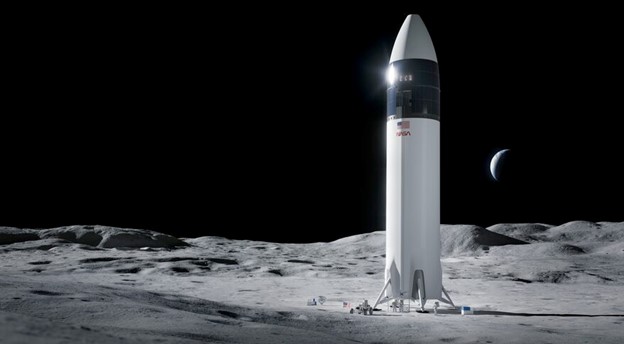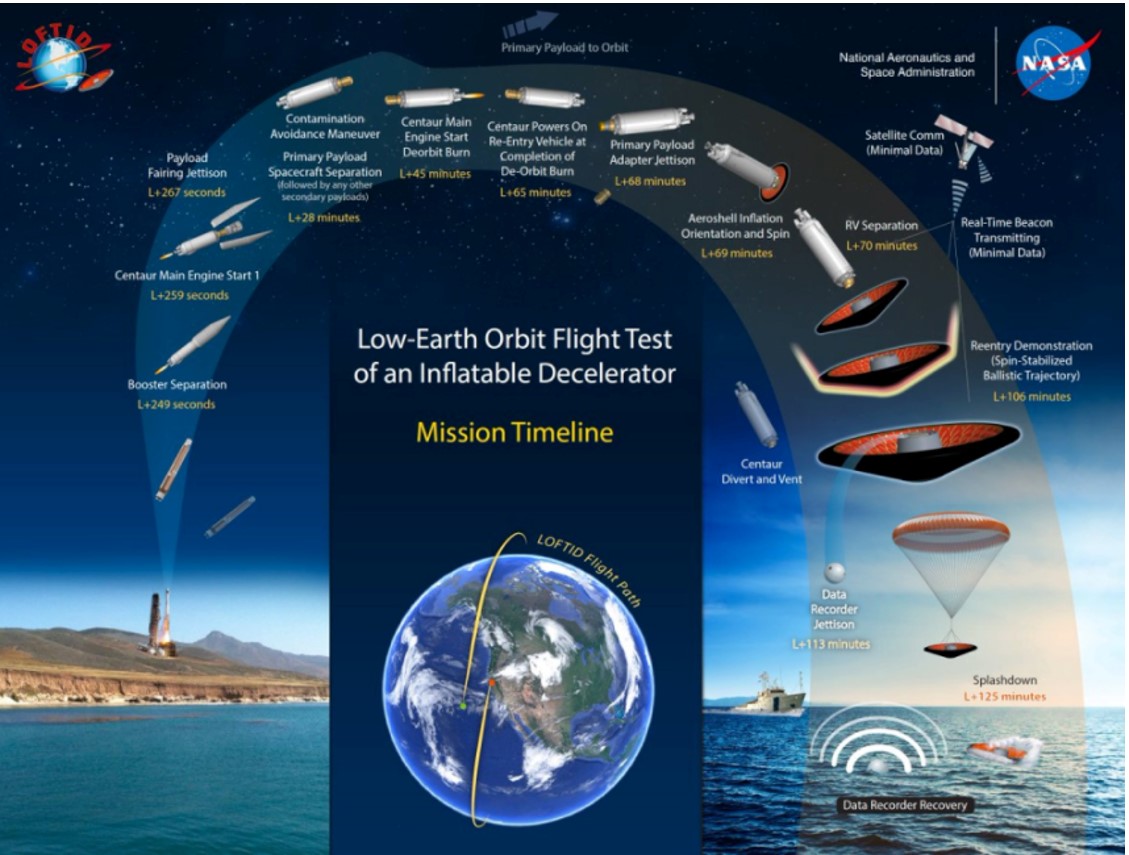Dear Reader,
While neither cryptocurrencies nor the stock market are currently going “to the Moon 🚀”… at least something is.
Launched at 1:47 a.m. Eastern Time this morning from the Kennedy Space Center in Florida, NASA’s Artemis 1 is already on its way.
Artemis 1 Lifts Off

Source: NASA
Considering the sheer insanity of the last couple of weeks, it’s great to see positive progress like this – and something far bigger than all of us.
After all, Artemis 1 is just the beginning. Its 25-day journey around the Moon and back to Earth, which includes a week in the Moon’s orbit, is just the first test flight in preparation for a crewed landing on the Moon. It’s been more than half a century since that last happened.
Artemis 2 is currently scheduled for launch in 2024, which will send astronauts on a similar mission with a lunar flyby. And Artemis 3 is likely scheduled for 2025, with plans to land astronauts near the Moon’s south pole… which is where things get interesting.
Artemis 3 will employ SpaceX’s Starship as its Human Landing System (HLS).
SpaceX was awarded a $2.9 billion contract from NASA in April 2021. And just yesterday, it was awarded an additional $1.15 billion in support of the HLS and the Artemis 4 mission.
SpaceX’s Starship Human Lander Design

Source: NASA
These developments are all in preparation for what will ultimately become a permanent presence on the Moon, and ultimately a gateway to further exploration of our solar system.
The SpaceX Starship is scheduled for its first orbital flight next month. Pictured above, it’s a massive spacecraft unlike anything seen before.
SpaceX’s position in the industry has not only been a catalyst for the return of space exploration, but also an accelerant for the private space industry.
At the same time that SpaceX is supporting NASA’s Artemis missions, it will continue to launch its own missions for space travel both to the International Space Station (ISS), the Moon, and ultimately Mars – probably before NASA commissions its outpost on the Moon.
SpaceX will also launch the first private space station that Axiom Space is building right now. Its modules will attach to the ISS and then detach as a standalone space station when the ISS is decommissioned.
SpaceX has carefully carved out a position in the industry that allows it to both partner and collaborate with NASA, as well as effectively compete with NASA in a race toward human space exploration and the ultimate evolution toward becoming a multi-planetary species.
To the Moon and beyond!
Yesterday, we had a look at IBM’s new 433 qubit quantum computer. Today, we’ve got an exciting development from an early stage quantum computing company that’s showing progress.
Toronto-based Xanadu is a company I’ve been tracking for some time now. It’s pursuing a unique approach to quantum computing – using photonics.
This isn’t a popular approach in the industry. But it does provide some interesting benefits.
Xanadu’s photonic processors are capable of programming and utilizing all qubits within a quantum computer simultaneously. The advantage here is that this enables a quantum computer to be scaled up very quickly.
Another advantage to this approach is that it doesn’t need a massive dilution refrigerator to cool the quantum computer to temperatures colder than deep space.
Xanadu’s goal is to work up to a 1 million qubit quantum computer. And photonic processors, if proven to be fault tolerant, could make that a reality faster than any other approach.
Developing a universal fault tolerant quantum computer is the grand challenge. That’s to say, the company has to ensure that its system doesn’t produce too many errors. In industry lingo, it has to minimize “noise” in the machine.
While it’s still not clear if Xanadu can solve for the noise in the system, it’s certainly possible. I’ve been waiting to see if serious capital would invest in the company as an indication that there’s a belief Xanadu’s tech can be commercialized.
And that’s exactly what just happened. Xanadu just closed a $100 million Series C funding round. This values the company at $1 billion… giving it unicorn status.
This signals that the venture capitalists (VCs) like what they see from Xanadu.
And sure enough, the company just demonstrated quantum advantage with its 216 qubit quantum computer, Borealis. That’s the point at which a quantum computer proves that it can outperform a classical supercomputer.
To do this, Xanadu showed that its quantum computer could solve a specific problem in 36 microseconds. That same problem would take a classical supercomputer 9,000 years to produce the same result.
2022 has already proven to be a breakthrough year in terms of quantum computing developments, and funding for quantum computing companies.
That means the industry is in for an even more spectacular year in 2023 as these investments result in even larger breakthroughs.
Last week, NASA successfully completed its Low-Earth Orbit Flight Test of an Inflatable Decelerator (LOFTID) mission. It involves new inflatable heat shield technology. And this has very exciting implications for space exploration.
Check this out:
NASA’s Aeroshell Inflatable Heat Shield

Source: NASA
The gray item in the center of this heat shield is a payload for test purposes. In a real mission, this could be a spacecraft, a satellite, or space cargo.
The orange contraption around the payload is NASA’s new inflatable heat shield. It’s 20 feet wide when fully inflated.
Of course, the purpose of a heat shield is to protect the payload as it enters a planet’s atmosphere and descends to the surface.
Historically, special materials were used around a spacecraft to protect it from the heat endured on re-entry. This adds weight to a spacecraft and also impacts design decisions.
That’s not the case with this new inflatable heat shield. When deflated, it’s only 4 feet by 1.5 feet in size. Therefore, it’s easy and lightweight, making it easy to bring into orbit for eventual use.
Once in space, the heat shield can attach to the target payload, fully inflate, and orient itself for re-entry. Here’s a great visual from NASA:
The Life Cycle of an Inflatable Decelerator

Source: NASA
Here we can see the entire process from launch to landing.
Notice how the heat shield inflates around the payload and protects it upon entering the atmosphere. Then the heat shield deploys a parachute and guides the object safely down to the surface.
What’s so exciting here is that this technology can be used to get specialized rovers and other spacecraft down to the surface of Mars or any other planet. I say “specialized” because engineers will have a lot more flexibility with designing the craft if they don’t have to design a heat shield on its exterior to provide protection on atmospheric entry.
This is an exciting approach that can be employed for returning spacecraft to Earth, or for landing on Mars.
United Airlines just announced the first defined electric vertical takeoff and landing (eVTOL) air taxi route in the United States. It will run from Newark airport to a heliport in downtown Manhattan. That’s just blocks away from Wall Street.
As a reminder, eVTOLs are electric passenger aircraft that can take off and land vertically. We can think of them as a combination of mini-helicopters and drones.
And these aircraft are absolutely ideal for air taxi services. They will enable travelers to bypass heavy traffic on the ground in major cities around the country.
To illustrate this, here’s a look at the first air taxi route United Airlines just announced:
United Airlines’ eVTOL Route

Source: Google Maps
Here we can see that driving from Newark airport to the same heliport would take over an hour. And we all know how bad New York traffic usually is.
United Airlines passengers will be able to transfer directly to an Archer eVTOL and air taxi to the same heliport in less than 10 minutes. How’s that for convenient? Land at Newark, transfer to the heliport, and in less than 10 minutes, you’re within walking distance of Wall Street.
These kinds of air taxi services make perfect sense. I think we’ll see them proliferate quickly once in operation. The aircraft won’t be comparatively expensive, nor will the operations, which means the passenger price points will be affordable to most.
As for the timing, United Airlines expects this route to be fully operational by 2025. That’s just over two years away. It plans to add additional routes in New York and around the country as well.
I’m very excited to see United Airlines stepping up here.
Air taxi services like this are the future of transportation, especially in major metropolitan areas. And as a frequent traveler myself, I can’t wait to have access to these services.
Regards,
Jeff Brown
Editor, The Bleeding Edge
The Bleeding Edge is the only free newsletter that delivers daily insights and information from the high-tech world as well as topics and trends relevant to investments.
The Bleeding Edge is the only free newsletter that delivers daily insights and information from the high-tech world as well as topics and trends relevant to investments.